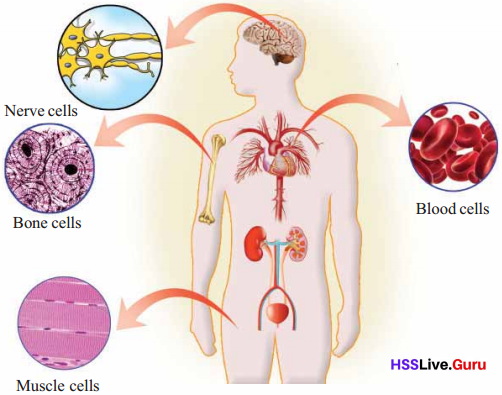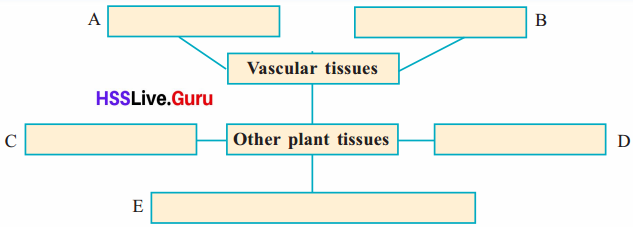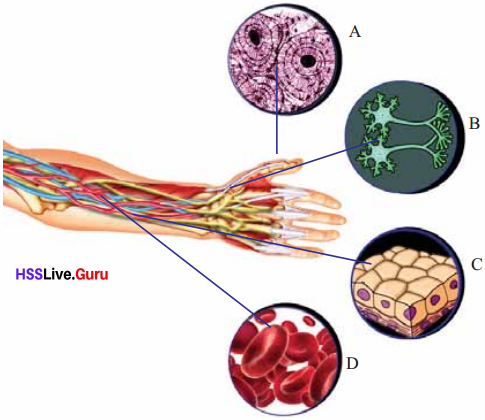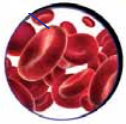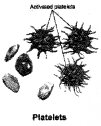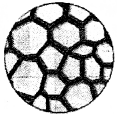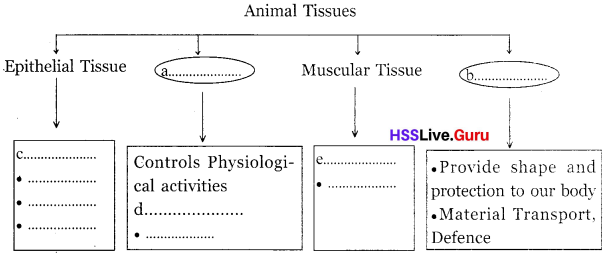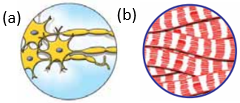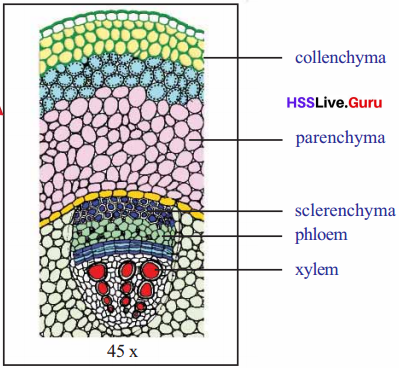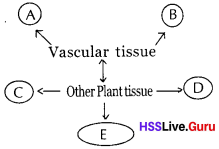You can Download Let’s Regain Our Fields Questions and Answers, Summary, Activity, Notes, Kerala Syllabus 8th Standard Basic Science Solutions Chapter 3 help you to revise complete Syllabus and score more marks in your examinations.
Kerala State Syllabus 8th Standard Basic Science Solutions Chapter 3 Let’s Regain Our Fields
Let’s Regain our Fields Questions and Answers
Let’s Regain Our Fields Kerala Syllabus 8th Food Safety
Food Safety is a condition in which every individual are provided with food enough to lead a healthy life. It is very’ essential to ensure food safety to create a society in which there is no fear of poverty and health issues due to malnutrition. It is a challenge to ensure food safety in a condition in which the agricultural fields are declining. A culture that loves soil and agriculture has to be recreated. It is also important to regain the lost agricultural fields.
Indicators (Text Book Page No:35)
Lets Regain Our Fields Notes Kerala Syllabus 8th Question 1.
Didn’t you notice the illustration and the newspaper report?
Answer:
Population explosion, insufficient agricultural fields, negative attitude towards agriculture, unscientific vision, methods of agriculture, influence of consumer society, etc., are the causes of scarcity of food.
Lets Regain Our Fields Notes Pdf Kerala Syllabus 8th Question 2.
What is the concept indicated by the illustration?
Answer:
Modern techniques of agriculture play a major role to overcome the problems and crises mentioned. The techniques agriculture like polyhouse farming, open precision farming, integrated pest management, hydroponics. aeroponics etc are the contributions of science. The novel information and findings form remedy for food scarcity.
Let’s Regain Our Fields Pdf Kerala Syllabus 8th Question 3.
Discuss it with your friends using the given indicators. Write your inferences in the science diary.
Answer:
The major goal of food safety is to eliminate hunger and poverty from our country. Supplying food grains in cheaper rates is ultimately beneficial to the people of the lower strata.
Indicators (Text Book Page No:36)
Class 8 Biology Chapter 3 Kerala Syllabus Question 4.
What were the changes that occurred in the area of agricultural fields from the year 1971 to 2011?
Answer:
During the period 1971-2011, the area of agricultural fields considerably reduced. In 1971 the area was 8.75 lakh hectors and in 1991 it was reduced to 5.5 lakh hectors. It was reduced to 2.08 lakh hectors in the year 2011.
Let’s Regain Our Fields Notes Kerala Syllabus 8th Question 5.
What tendency could be observed in rice production and population growth during the period?
Answer:
In this period population increased from 2.13 crores to 3.34 crores. But the production of rice steeply reduced from 13.65 lakh tons to 5.69 lakh tons.
8th Class Biology Notes Pdf Kerala Syllabus Question 6.
Is this tendency desirable? Why?
Answer:
This tendency is not advisable. The increase in population and decrease in the area of crop field and the production of rice may lead the nation to poverty. The goal of food safety will not be attainable.
Hss Live Guru 8 Biology Kerala Syllabus Question 7.
What are the obstacles faced by farmers today?
Basic Science Question and Answer:
The Crises in the field of Agriculture
Farmers face a number of crises. They are mainly loss, cost of production, limited cultivable land, climate change, exploitation of brokers, environmental destruction and health issues, etc. Many of these problems can be overcome if a positive attitude towards agriculture develop. There are many possibilities to solve every problems.
i. Fertile soil
Around 20 different elements are required for the growth of plants. They are called essential elements.
eg: Carbon, Hydrogen, Oxygen, Nitrogen, Phosphorus, Potassium, Sulphur
These elements are naturally available in the soil by the decomposition .of microorganisms. The fertility of soil can be increased by proper manuring. Organisms like bacteria, fungi, algae, termite, earthworm, etc., help to increase the fertility of soil.
Indicators (Text Book Page No:38)
Hss Live Guru 8th Biology Kerala Syllabus Question 8.
What is the role of microorganisms in ensuring the natural availability of elements in the soil?
Answer:
The elements are naturally available in the soil by the decaying action of micro-organisms. When leguminous plants are grown in fields, the microorganisms that harbour in the root nodules fixes atmospheric nitrogen to the soil, bacteria, fungi, algae, termite, earthworm, etc., increase the fertility of the soil.
Hsslive Guru Biology 8th Kerala Syllabus Question 9.
What is the need of testing the soil?
Answer:
Soil analysis (soil testing) is done in order to detect the amount of elements present and their pH value of the soil.
Let’s Regain Our Fields Pdf Download Question 10.
Why does the application of fertilizers become essential for better crop yield?
Answer:
Fertility of the soil is increased by proper manuring. Manuring helps to make up the deficiency of elements in the soil that are required for plant growth. As a result better yield is obtained.
Lets Regain Our Fields Pdf Kerala Syllabus 8th Microbial Fertilizer
Microbial fertilizers are substances that contain micro-organisms that facilitate the fertility of the soil. Micro-organisms increase the amount factors, required for plant growth, in the soil. The bacteria like rhizobium, Azotobacter, azospirillum, and the aquatic plant azolla increase the amount of nitrogen in soil. Many things are to be taken care to retain the microorganisms in the soil. They are
- Ensure the availability of organic fertilizer(biofertilizers) in the soil.
- Sufficient water supply must be there.
- Do not use chemical fertilizers and pesticides.
Consequences of Unscientific application of fertilizers
Indicators (Text Book Page No:39)
Kerala Syllabus 8th Standard Biology Notes Question 11.
What are the consequences of unscientific application of chemical fertilizers? Discuss on the basis of the following indicators.
- composition of soil
- microorganisms in soil
- health issues
- financial factors
Answer:
Unscientific fertigation loses the fertility and changes the natural texture of soil. Certain elements required for plant growth will exceed in the soil and certain others become insufficient. Chemical fertilizers do not provide all the elements required for plant growth in proper amount and proportion.
Excessive fertigation and the use of pesticides kill the microorganisms in the soil. Thus the natural fertility of the soil loses.
The chemical substances present in chemical fertilizers get accumulated in agricultural crops (through biological magnification). It causes many chronic diseases in organisms including man who consume this food.
Chemical fertilizers and pesticides are expensive. Fertilizers are manufactured by small scale industries as well, as multinational companies. The expenses is not affordable by the farmers. Thus unscientific application of fertilizers causes consequences of varied dimensions.
Hsslive Guru 8th Class Biology Kerala Syllabus Pest Control
Many methods are adapted today to control pests. Chemical pesticides are widely used. Chemical pesticides kill the pest as a whole. Use of chemical fertilizers cause a number environmental and health problems. High amount of chemical fertilizers are reported in ground water too.
Another possibility is to control pests using ultrasonic sound waves.
Using radiation the reproductive capacity of male pests can be lost and makes pest control effective.
Pheromone traps like devices also makes pest control effective. Pest control using the natural enemies of pest is highly effective and having no environment and health consequences.
Natural Enemies of Pest (Friendly Pests)
Organisms that eat pests, cause disease to them or parasitises on them are called their natural enemies.
8th Std Biology Notes Kerala Syllabus Integrated Pest Management
In this method, the use of chemical pesticides is highly reduced. Pest control is made possible by the combined use of biological pesticides, friendly pests, mechanical control methods, etc. It will not disturb the equilibrium of the ecosystem.
It do not destroy pests as a whole. But it prevents the multiplication of pests and the number of pest is cortrolled to prevent crop loss.
Advantages of Integrated Pest Management
- Do not kill the pests as a whole
- Use of chemical pesticides is highly reduced.
- No environmental or health issues as friendly pests, mechanical control measures, Biological pesticides, etc. are used.
- Does not disturb the equilibrium of ecosystem.
Waste Management
Indicators (Text Book Page No:41)
Hss Live Guru 8 Physics Kerala Syllabus Question 12.
Waste management and sustainable agriculture
Answer:
Live Stock management, Poultry farming, Pisciculture etc, help not only to earn income but also to the treatment of biological wastes. Composting, biogas production etc, are possible by using bio wastes. Cow dung is a very good biological manure and an essential component . for the production of biogas. By preparing cattle feed, fish food, poultry feed, etc., from bio waste more earnings can be done and biological waste management also possible.

Hsslive Guru 8th Basic Science Kerala Syllabus Certain methods of Agriculture
Many farming techniques that help to earn improved income by scientific approach are in practice.
eg: Rearing of cattle’s, Poultry farming, Sericulture, Pisciculture, Floriculture, Apiculture, Cuniculture, Mushroom culture, Horticulture, Medicinal plant cuitivation etc.
→ Live stock Management
Rearing of cattle’s for milk, meat and agricultural purposes.
→ Poultry farming
Rearing of birds for egg, meat etc.
→ Sericulture
Rearing of silk worms
→ Pisciculture
Rearing of fishes
→ Floriculture
Cultivation of flowers for commercial purposes.
→ Apiculture
Rearing of honeybees
→ Cuniculture
Rearing of rabbits
→ Mushroom culture
Cultivation of mushrooms .
→ Horti culture
Cultivation of fruits and vegetables.
Completion of Table(Text Book Page No:44)
Hss Live Guru Biology 8 Kerala Syllabus Question 13.
Complete the following table related to various agricultural sectors.

Answer:
| Areas | Products | Varieties |
| Pisciculture | fish, fish liver oil | Pearl spot, Rohu |
| Apiculture | Honey, Wax | Kolan, Mellifera Njodiyan |
| Mushroom culture | Edible mushroom | Milk mushroom, Button mushroom |
| Livestock management | Milk, Meat | jercy(Cow) Murrah (Buffalo) Jamnapari (Goat) |
| Cuniculture | Meat | Grey giant, White giant |
| Sericulture | Silk thread | Mulberry silkworm Tussar silkworm Muga silkworm |
| Poultry farming | Egg, Meat | Athulyaf(hen) Muscovy (duck) Bobwhite (Quail) |
Modern Techniques of Agriculture
1. Polyhouse farming
Polyhouse is a special arrangement made by completely or partially covering transparent sheet like polythene. Humidity and temperature kept constant in polyhouse. So plant growth will be fast. Nutrients are dissolved in water and sprayed. Pest attack also will be less.
2. Open Precision farming
This is a technique in which the nature of soil in the agricultural land, quantity of elements in the soil, presence of water in the soil, etc., are studied accurately with the help of modern technology and suitable crops are selected for cultivation. The attack of weeds also is less because the soil is covered using polythene sheets. Water supply or irrigation can be limited.
3. Hydroponics
Plants are grown in nutrient solution.
4. Aeroponics
Plants are grown in such a way that their roots are grown towards air and nutrients are directly sprayed to the roots.
Indicators (Text Book Page No:46)
Hss Live Guru 8th Basic Science Kerala Syllabus Question 14.
How are modern agricultural practices helpful in reducing crop loss due to climate change?
Answer:
In arrangements like polyhouses temperature and humidity are maintained constant. Plant grows fast and gets better yield. Polyhouse farming helps to reduce crop less due to climatic changes.
Basic Science Class 8 Chapter 3 Kerala Syllabus Question 15.
What are the advantages of precision farming?
Answer:
This is a technique in which the nature of soil in the agricultural land, quantity of elements in the soil, presence of water in the soil etc., are studied accurately with the help of modem technology and suitable crops are selected for cultivation. The attack of weeds also is less because the soil is covered using polythene sheets. Water supply or irrigation can be limited.
Class 8 Science Notes Kerala Syllabus Question 16.
How does cultivation become possible without depending on soil?
Answer:
• Hydroponics and aeroponics are soilless cultivation methods.
• Plants are grown in nutrient solution.
• Aeroponic plants are grown in such a way that their roots are grown towards air and nutrients are directly sprayed to the roots.
Farmers groups
Nowadays farmers groups, that provide farmers an opportunity to sell and buy their products without brokers mediators are very lively. Online gathering of farmers also is widespread as the demand for organic product raised. These online groups help to find customers for the quality organic products and to get good price for the products.
Completion of Table(Text Book Page No:51)
Question 17.
Complete the following table, adding important ideas.
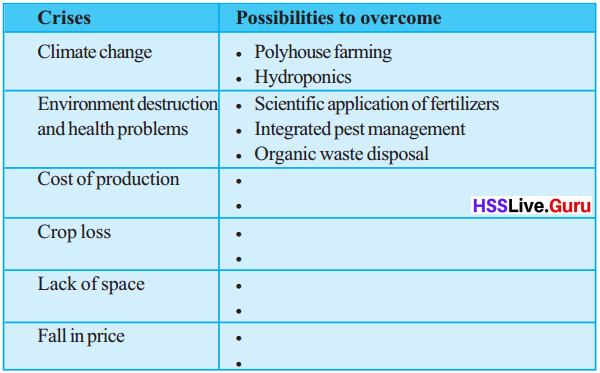
Answer:
| Challenges | Remedies |
| Climatic change | • Polyhouse farming
• Hydroponics |
| Environmental distruction and health hazards | • Scientific manuring
• Integrated Pest manage ment. Biological waste Management |
| Cost of production | • Microbial fertilizers
• Integrated farming |
| Crop loss | • Polyhouse farming
• Open precision farming
• Integrated Pest management |
| Limited space | • Hydroponics
• Aeroponics
• Terrace farming Loss |
| Loss | • Farmers societies • Online gatherings |
Let’s Regain Our Fields Let us Assess (Text Book Page No:52)
Question 1.
Cuniculture is related to
a. Keeping of honey bees
b. Rearing of rabbits
c. Cultivation of fruits and vegetables
d. Rearing of fish
Answer:
Rearing of Rabbits
Question 2.
High quality hybrid varieties provide high yield. Then, what is the need of native varieties? Record your response to this statement.
Answer:
The native varieties exist in a particular locality by acquiring natural resistance and adaptations to the climate, availability of food, nature of soil etc., though they have low productivity.
The native varieties have high resis-tance to diseases and environmental conditions. The extinction of native varieties leads to the depletion of our biodiversity. New varieties can be developed only from the native varieties.
Question 3.
Which is the most appropriate way to reduce crop loss due to pests?
a. Using high concentration pesticides
b. Protecting friendly pests.
c. Practicing integrated pest management
d. Applying organic pesticides only.
Answer:
C Adopt integrated Pest control
Question 4.
‘Lower price during higher yield’. Suggest a practical solution to overcome this crisis faced by farmers.
Answer:
Collect and distribute resources through farmers societies.
Let’s Regain Our Fields Additional Questions and Answers
Question 1.
Find the odd one in each group.
Also write the common characterestic of the others.
a. Compost, Microbial fertilizer, urea, Bone-meal
b. Anthurium, Sida, Ramacham, Koovalam
c. Boer, Litchi, Rambutan, Durian
d. Phosphorus, Potassium, Nitrogen, Azetohactor
e. Rock Phosphate, Factompho- se, Muriate of Potash, Malatheon,
f. Kuthiravaly, Jyothy, Thriveni, Jaya
g. Fowl Cholera, Anthrax, Chores, Ranikatt
h. Blight disease, Root wilt, Bud rot
i. Ammonia, Urea, Compost, Factomphose.
j. APIS (njodiyan); Naaran, Melliferra.
k. Minorka, Royans, Ankona, Gramalakshmi.
Answer:
a.Urea – This is a chemical fertilizer. Others are Bio-fertilizers.
b. Anthurium – This is an ornamental plant. Others are medicinal plants.
c. Boer – It is a variety of goat. Others are fruit varieties.
d. Azetohactor – Others are essential elements.
e. Malatheon – This is a chemical pes ticide others are chemical fertilizers.
f. Kuthiravaly – This a hybrid vari ety pepper plant others are vari eties of paddy.
g. Anthrax : This is a cattle disease others are fowl diseases.
h. Blight disease, It is affect on rice plant others are diseases of coconut tree.
i. Compost – This is an organic fertiliser, others are chemical fertilisers
j. Naaran. This is prawn.Others are Honey bees used in apiculture.
k. Royans is good quality ducks, Others are fowl varieties.
Question 2.
Find out the relation between the given word pairs and on that basis fill in the blanks.
a. Rearing of honey bees : Apiculture; Rearing of silkworms : …………..
b. Malabari : Goat; Vechoor : …………..
c. Cowdung: ………….. ; Azospirillum : Microbial Fertilizer
d. Jersey: Cow; Murrah: …………..
e. Mushroom culture : Growing mushroom; Cuniculture : …………..
f. Malatheon : Chemical pesticide; Neem seed kemal: …………..
g. ………….. – Virus; Anthrax Bacteria.
h. Native variety : vechoor; Hybrid variety : …………..
i. Paddy- ………….. ; Arecanut plant : Mahali
j. Cocount caterpillar – ………….. ; Gamboosia- Larvae of mosqitoes
k. …………..: Domestic hen; Pekkins : Domestic Duck.
l. Blight disease- Paddy; Quick wilt- …………..
m. Organic fertiliser – Vermiw- ash; ………….. – Factomphose.
Answer:
a. Sericulture
b. Cow
c. Organic fertilizer
d. Buffalo
e. Rabbit farming
f. Organic pesticide
g. Foot and Mouth disease
h. Jersey cross
i. Blast disease
j. Ichneumon wasp
k. Royans is good quality ducks, Others are fowl varieties.
l. pepper.
m. chemical fertilisers
Question 3.
Arrange the following items from column B ,C with column A.
A
Agricultural sectors | B
Speciality | C
Varieties |
| a. Horticulture | i. scientific way of rearing of honey | 1. Ankora |
| b. Apiculture | ii. scientific way of rearing of rabbits | 2. Litchi |
| c. Cuniculture | iii. scientific way of rearing silkworm | 3. Njodiyan |
| iv. scientific cultivation of fruits and | 4. Naran |
Answer:
A
Agricultural sectors | B
Speciality | C
Varieties |
| Horticulture | scientific way of rearing of honey | Litchi |
| Apiculture | scientific way of rearing of rabbits | Njodiyan |
| Cuniculture | scientific way of rearing silkworm | Ankora |
Question 4.
Group the following statements into suitable for Polyhouse farming and Precision farming.
a. limiting the irrigation by covering soil with polyethene sheet.
b. Cover the field completely or partially by transparent polyethene sheet.
c. By regulating temperature and moisture constantly.
d. Selecting appropriate crop for agriculture only jifter understanding characters of soil, amount of elements present in soil and the presence of water.

Answer:
- polyhouse farming – (b), (c)
- Precision farming – (a), (d)
Question 5.
“It is essential to retain indegenious species of mango tree like Muvandan, Kilichundan even many hybrid varieties are avail-able”. Write your opinion to the farmer’s statement? Justify your answer?
Answer:
- Farmer’s opinion is right.
- Indigenous varieties of a locality are varieties that acquire natural immunity by adapting to the climate, the availability of food, soil texture of the place etc.
- We can develop new high quality varieties only from indigenous varieties.
Question 6.
Find suitable term and fill the blanks;
Moovandan – Mango Tree Kasaragodu Dwaf – a. …………..
Njalippoovan – Musa Attappadi black – b. …………….
Answer:
a. Cow
b. Goat
Question 7.
Sustainable farming is an environment friendly method. Explain the reason.
Answer:
The excessive use of chemical fertilizers and pesticides may give increased profit. But this will not last long. The continuous use may spoil the natural fertility of the soil and the farmland may be changed into a barren land. By integrated cropping method, the use of outside manures, pesticides etc can be reduced. The wastes of one can be used as a manure or food for some other one. This will help to maintain the natural fertility of the soil. Moreover, the biodiversity also is conserved.
Question 8.
The practice of cultivating fruits and vegetables.
Answer:
Horticulture
Question 9.
Some statements regarding modern agricultural practices are given below. Which agricultural practice is related to this?
a. The method of farming in which nutrients are dissolved in water and are supplied on plants through dip irrigation.
b. The method plants are grown in nutrients solution
c. The method of farming by covering the rool using polythene sheets and by limiting.
Answer:
a. Polyhouse farming
b. hydroponics
c. precision farming
Question 10.
Polyhouse farming will be advantageous only in farmlands where cultivation is continuously maintained. Why?
Answer:
The cost of making a polyhouse is very high. But the yield from the crops will increase substantially.
Question 11.
Which of the following is not desirable in integrated pest control method?
a. Mechanical Pest Control
b. Excessive use of chemical pesticide
c. Friendly pests
d. Use of biopesticides
Answer:
b. Excessive use of chemical pesticide
Question 12.
What is the difference between polyhouse farming and open precision farming
Answer:
Poly house farming
- Agricultural land is partially or completely covered by transparent polythene sheet.
- Heat and humidity are kept constant
- Nutrients are dissolved in water and given to plants through drip fertigation. Pest attack is compara-tively low.
Open Precision farming
- Soil is covered by polythene sheet
- Nature of soil, amount of elements in soil, pH of soil, presence of water etc are studied accurately using modern technology
- Limited irrigation is needed.
- Weed control is effective
Question 13.
What are the main characteristics of hybrid varieties?
Answer:
High yield, disease resisting capacity ability to give high yield within a short period etc. are the characteristics of hybrid varieties.
Question 14.
What are the consequences of unscientific application of chemical fertilizers?
Answer:
- Financial loss.
- Chemical pollution.
- Destruction of microorganisms
- Health issues.
Question 15.
How can grow plants without soil?
Answer:
Science has proved that cultivation is possible in the absence of soil, for example aeroponics and hydroponics. In hydroponics, plants are grow in nutrients solution. In aeroponics, plants are grow in such a way that their roots grow into air and nutrients are sprayed directly on roots.
Question 16.
What are the different varieties of buffaloes?
Answer:
Bhadawari, Jaffrabadi, Marwari, pashmina, malabari, Beetance.
Question 17.
Find out the odd one. Write the common feature of others. Rhizobium, Azetobacter, Lacto bacillus, Azospirillum
Answer:
Lactobacillus – others are nitrogen-fixing bacteria.
Question 18.
Arrange the organisms properly in the given table. Names are mentioned in the box.

Answer:
a. Jersey, Murrah
b. Athulya, Muscovy
c. Naran, Kara
d. Grey giant, Ankora
e. Muga, Tusser
f. Mellifera, Kolan
Question 19.
What is the difference between hydroponics and aeroponics?
Answer:
- Hydroponics is the technique by which plants are grown in nutrient solution
- In aeroponics plants are grown in such a way that their roots are penetrating towards air and nutrients are directly sprayed to their roots.
Question 20.
What are the advantages of precision farming?
Answer:
In this method of farming the nature of soil, quality of elements in the soil, pH value of soil, presence of water etc, in the crop field are tested using modem technology and appropriate crops are selected for cultivation.
Question 21.
What are the advantage of house farming and family farming
Answer:
a. Nontoxic food
b. Maximum utilization of land/space
c. Exercise
d. Mental Pleasure
e. Collaborative work of family members
Question 22.
How do microbial fertilizers help in plant growth?
Answer:
Microbial fertilizers contains micro organisms that increase the fertility of soil. They increase the amount of growth promoting factors in soil.
Eg: Rhizobium Azetobacter raise the amount of Nitrogen in the soil.
Question 23.
Which are the foreign varieties of fowl reared in our place?
Answer:
White leghorn, Rhode Island Red, Plymouth Rock, New Hampshire
Question 24.
What are the diseases of fowls
Answer:
Ranikatt, Fowl Cholera, Salmonellosis, Diarrhoea, Chores (Bacteria) Aspergillusis (Fungus).





















































































































































































































































































































